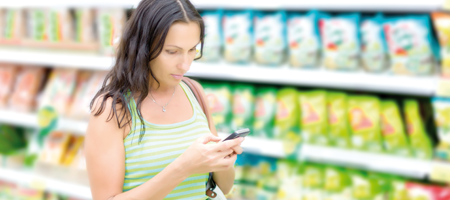Understanding Food Labels
Learning to read the label on food can be really helpful when it comes to keeping an eye on what you eat.

Learning to read the label on food can be really helpful when it comes to keeping an eye on what you eat. Although labels can look very complicated at first, with a little practice you will be able to quickly check a label to see if a food is high fat, low fat, low sugar or high in salt and you will be able to make better food choices for you and your family.
When it comes to finding out about nutrition on a food label, the key places to look are the ingredients list and the nutrition table.
Ingredients List
Want to reduce fat and sugar? Look at the ingredients. The first ingredient listed is the one that is there in the largest amount. The next ingredient is there in the second largest amount and so on all the way to the last ingredient, which is there in the smallest amount. So if oil, butter, cream or sugar come first, then that food is probably going to be high in calories! Get into the habit of looking at the ingredients in foods, especially if it is the first time you are buying it.
Nutrition table
The nutrition table is the grid on the back of the pack which tells you about the energy or calories, as well as the fat, protein, salt, sugar and fibre. Most nutrition tables will tell you about the nutrients that are found in 100g of the food. This is useful because then you can compare it to other, similar foods – for example if you want to compare the amounts of fat in two different brands of salad dressing.
What is too much and what is ok?
Energy/Calories |
|
| Low calorie is 40 calories or less per 100g of a solid food or20 calories or less for liquids | |
| Fat | |
| Low fat is 3g of fat or less per 100g | High fat is 20g of fat or more per 100g |
| Saturated Fat | |
| Low in saturated fat is less than 1.5 g of saturated fat per 100g | High in saturated fat is more than 5g of saturated fat per 100g per 100g |
| Sugar | |
| Low sugar is less than 5g of sugar per 100g | High sugar is more than 15g of sugar per 100g |
| Salt | |
| Low salt is less than 0.6g of salt per 100g | High salt is more than 1.5g of salt per 100g |
| Sodium | |
| Low sodium is less than 0.1g of sodium per 100g | High sodium is 0.6g of sodium or more per 100g |
| Fibre | |
| A low fibre food has less than 3g of fibre per 100g | A high fibre food has more than 6g of fibre per 100g |
Reduced fat and low fat – what’s the difference?
A low fat food must have 3g of fat or less per 100g of the food. A reduced fat food must have 30% less calories than the full fat version. This means that it can still be quite high in fat so check the nutrition table to see how much fat there is, even if the label says ‘reduced fat’.